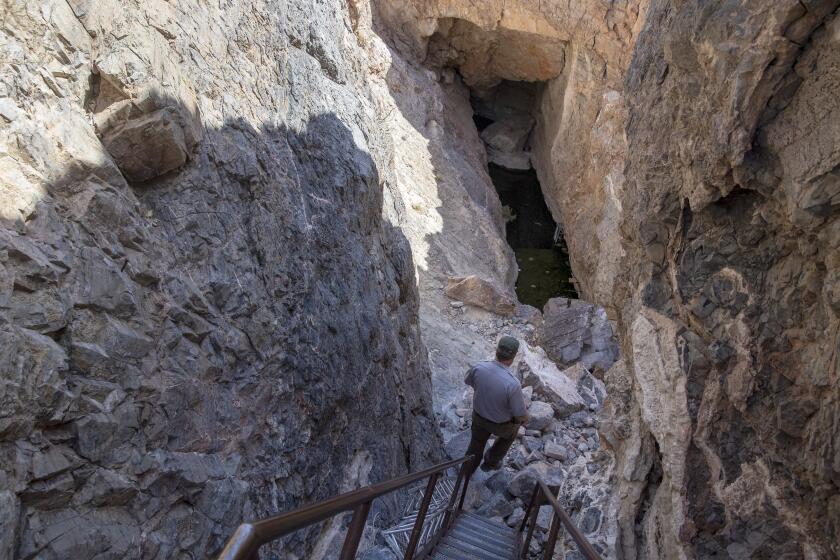Northern California earthquake prompts an endangered Death Valley fish species to get busy

- Share via
Powerful earthquakes like the one felt last week across Northern California are stark reminders for people to plan — perhaps to fortify their home or business or, at minimum, finally build that earthquake kit.
But for the Devils Hole pupfish, a critically endangered species found only in a deep limestone cave in Death Valley, an earthquake signals that it’s time to do something a bit more intimate.
Scientists say the fish’s likely response to the magnitude 7.0 earthquake, which rattled a large swath from San Francisco to Reno to southern Oregon, was to increase spawning activity to protect their population. It’s a phenomenon that’s happened during several prior earthquakes.
Centered under the Pacific Ocean about 70 miles southwest of Eureka, the strong quake frayed nerves across most of California’s North Coast.
About two minutes after the earthquake, the water in Devils Hole — about 500 miles away from the quake’s epicenter — started flowing. Scientists estimate the waves, known as a seiche, were nearly 2 feet high. For the typically still-water environment, the waves disrupted the shallow shelf that the pupfish use as a spawning area, likely knocking eggs deep into the cavern.
“There have been observations in the past that after flooding events and after these earthquakes that the fish have evolved to respond by increasing their spawning,” said Kevin Wilson, a biologist with the National Park Service. “Think of it as like, ‘Oh, no, there’s been a drastic change to my home, my habitat. I’d better try to make more babies.’”
The response isn’t irrational, according to scientists.
In 1967, pupfish were labeled an endangered species, one of the first in the United States. Before the mid-1990s, scientists counted between 200 and 250 Devils Hole pupfish each spring. But over the course of about 20 years, the fish’s population count dropped to an average of about 90, with an all-time low of 35 fish in 2013.
But population counts, which occur in the spring and fall, have been higher recently. Scientists found 191 pupfish in April — the highest spring count since 1999. In September, 212 fish were swimming around Devils Hole.
It was almost 10 years ago that biologists feared the Devil’s Hole pupfish was on the verge of extinction. Things look a little better today.
In the short term, Wilson said, earthquakes aren’t great for the pupfish. The waves push the algae that grows on the limestone shelf and small invertebrates that the fish eat deeper into the cave — most likely too deep for the little swimmers to access. But long term there’s a benefit, he said. The waves clean off decaying organic matter that could cause pockets of low oxygen, which can be fatal to pupfish eggs.
Wilson, who has spent years studying pupfish, said scientists can learn a lot about the effects of issues like climate change from Devils Hole and those tiny fish.
“I like to call Devils Hole kind of a canary in the coal mine or a bellwether,” Wilson said. “The changes we’re detecting in response to climate change and increased atmospheric temperature right now and how it’s affecting this ecosystem, we can apply that to other ecosystems that will become warmer in the future.”
More to Read
Sign up for Essential California
The most important California stories and recommendations in your inbox every morning.
You may occasionally receive promotional content from the Los Angeles Times.













